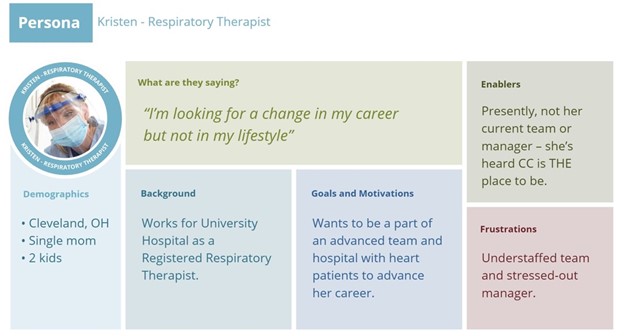September 12, 2022
by Patty Silbert
September 12, 2022
If your organization is like most, then to get to know your candidate you rely on assessments during the selection process to identify skills and cultural fit for the role. These assessments are important, but don’t often determine how happy a person is going to be in that role. And if your new hire’s not happy, they’re not going to give their best, and they’re certainly not going to last.
You need to have answers to some very important questions, long before you’ve narrowed down your candidate pool.
Do you know what makes someone in Bob’s role love their work? What makes their job most rewarding? Or what drives them to look for another role?
Knowing what makes your existing employees and your potential candidates “tick” is the key to engagement with your organization. Whether they are engineers or nurses or auditors, the candidates you’re speaking with have specific wants and needs that they share with others in their profession that drive their actions to seek out a new employer or stay at your company.
In the marketing world, when companies are trying to appeal to their customers, it’s common for marketers to identify those types of drivers among audience groups and create “pictures” of the ideal customer to market to, called a candidate persona. Creating these candidate personas improves efficiency and brand connection by helping marketers define their audience (who needs, and is going to be happy with, their product) and speak directly to them.
Can you imagine how impactful this type of information could be to your recruiting strategy?
I’m going to let you in on a trade secret: the most successful recruiters are those who use what they know about the specific industry and the disciplines that make up that industry they’re hiring for to color all their communications with those audiences. They bring in top talent because they have identified key drivers that make that audience receptive to the company’s offer. Don’t get me wrong; your brand contributes to those efforts, but it is only one of the factors that help attract the right fit.
The best recruiters get to know what drives their candidates’ actions, including:

Having a well-defined candidate persona will help you build a better sourcing and attraction plan in the long run and help you target your opportunities to the right groups of prospective candidates. It helps you better sell your open position to them. And, at the end of the day, it helps you hire people more likely to be engaged because they value what your position offers. It also helps for your hiring leaders to promote and talk about their industry — and the professions that make up that industry — from their vantage point.
So how do you go about building a candidate persona to fill Bob’s spot? It’s important to consider factors that reach far beyond anything you would see in a job description, a resume or what you are to pick up in an interview, and for that you’ll need to do some investigation:
Once you have gathered this information just don’t sit on it. Use it to drive your:
Candidate/Industry personas will help you identify with your audience and better position your recruitment marketing messages to speak to your candidates’ career aspirations. And when you speak to those needs, you win by attracting top talent.
Be sure to include your marketing team, Business Unit HR members and Management leadership when developing these personas as everyone brings a different perspective and different information to the table. Then once you have your candidate personas in place, act on them by using specific messaging in your content and by empathizing with candidates as they go through your talent pipeline.
Validate your personas as your business evolves, company innovations often dictate the need for new types of talent based on new technologies that may be driving that change.
Measure your results. Validate that your candidate experience and engagement levels have improved as a result of your content recruitment marketing efforts. Knowing what impact these efforts have had on these important KPIs will keep you ahead of your competition.
Interested to learn more? Fill out the form to see how Aspirant RPO can help you develop candidate personas for your business.